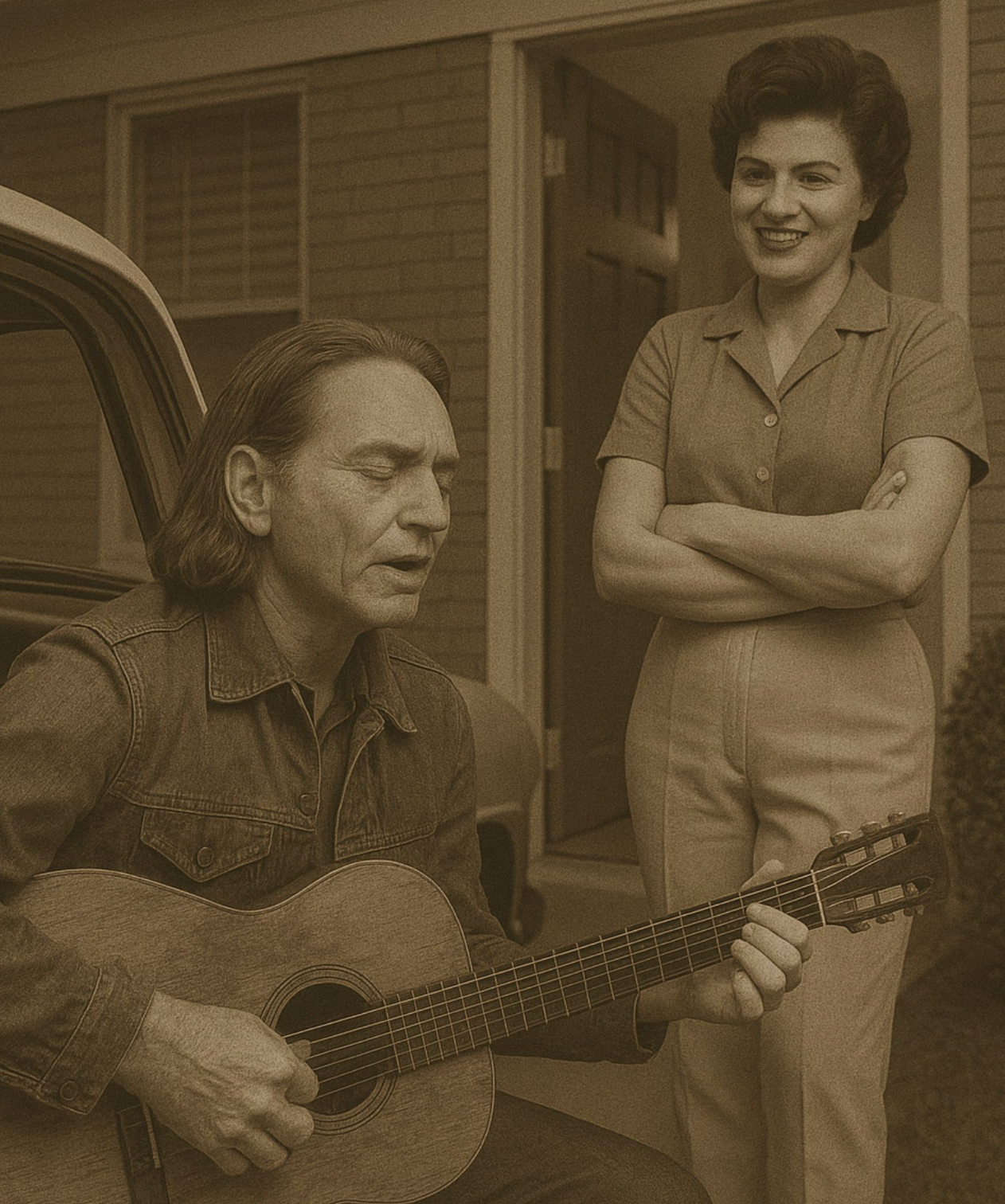One Beer, One Night, One Legend: The Wild Story Behind Willie Nelson’s ‘Crazy’
Introduction
Before Willie Nelson was a household name or an outlaw country legend, he was a struggling songwriter in Nashville. In 1961, armed with nothing but a melody, a broken heart, and a beer buzz, he sat in his car and sang a tune to the dashboard that would become one of country music’s most enduring ballads: “Crazy.”
It was Patsy Cline who took Nelson’s smoky lament and transformed it into a chart-topping, soul-aching anthem—a song that continues to echo through jukeboxes and hearts more than six decades later.

Willie Nelson wasn’t exactly on fire in the early ’60s. He was pitching songs to Nashville publishers and barely scraping by. But one late night, after too many beers and too much heartache, he pulled his car over and began singing a chorus that had been haunting his thoughts. That song was “Crazy.”
Initially offered to country artist Billy Walker—who passed on it because he thought it was too feminine—the track eventually made its way to Patsy Cline. Her producer, Owen Bradley, knew they had something special. Patsy, however, wasn’t convinced at first. It took some coaxing, especially since she was still recovering from a car accident.
Once she stepped into the studio, though, everything changed. With Nelson’s jazzy phrasing and Patsy’s velvety contralto, “Crazy” became a haunting waltz of lost love and lingering regret. It was released in late 1961 and climbed to No. 2 on the Billboard Hot Country Singles chart.
The emotion in her delivery wasn’t just acting. Cline knew heartbreak. And that raw, lived-in ache in her voice turned “Crazy” into more than a song. It became a confessional—a universal cry for anyone who’s ever loved in vain.
“I’m crazy for feeling so lonely / I’m crazy for feeling so blue…”
Nelson’s lyrics speak of vulnerability and emotional disarray with poetic simplicity. It’s not a complex song in structure, but its power lies in its honesty. When Patsy sang, “I’m crazy for crying, and crazy for trying,” she wasn’t just reciting lyrics—she was living them.
“Crazy” didn’t just launch Willie Nelson’s songwriting career; it solidified Patsy Cline as a cross-genre icon. The song has been covered by artists across generations: Linda Ronstadt, LeAnn Rimes, Norah Jones, and of course, Nelson himself.
It has appeared in countless films, television shows, and tribute albums. In 2003, it was ranked No. 85 on Rolling Stone’s list of the 500 Greatest Songs of All Time and inducted into the Grammy Hall of Fame.
Even today, the song continues to resonate. It lives on in karaoke bars, romantic playlists, and hearts that are still learning to let go. For all its simplicity, “Crazy” captures the essence of what it means to love, lose, and still feel.
Willie Nelson may have written the song in a haze of heartbreak, and Patsy Cline may have brought it to life in the studio—but it’s listeners who keep breathing life into it every time it plays.
“Crazy” is more than a song. It’s an emotional legacy. It speaks to the quiet moments we often keep to ourselves, the ones filled with doubt, yearning, and sorrow. And in doing so, it becomes a kind of shared confession, stitched together by one of country music’s most unlikely pairings.
From a beer-soaked car seat to the hallowed halls of music history, “Crazy” remains a testament to the power of a simple song, a timeless voice, and a moment of heartbreak that the world will never forget.
